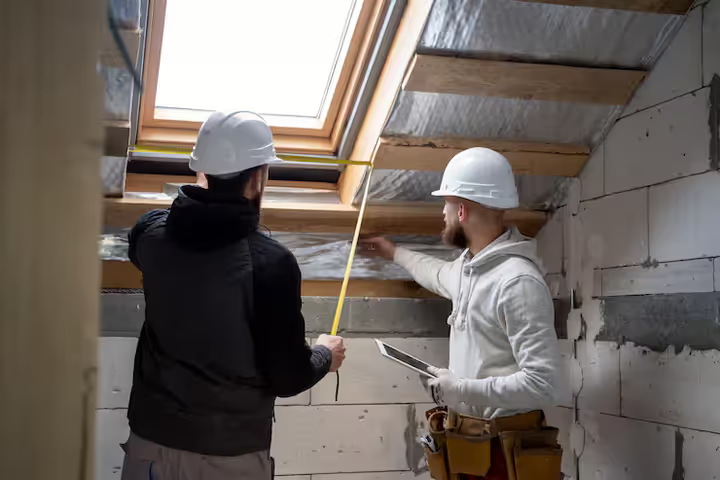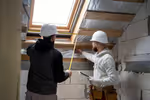
Roof Leak Repair Overview Basics, Explanation, and Helpful Suggestions
Roof leak repair refers to the process of identifying, understanding, and addressing water intrusion through roofing materials. It exists because roofs naturally degrade over time due to weather exposure, aging materials, structural shifts, poor installation, and environmental factors. When moisture penetrates the roof surface, it can travel across layers of insulation, underlayment, and framing, eventually appearing inside the home as damp patches, stains, or dripping water.
Roof leaks have been a concern for decades, but they have gained more attention in recent years due to increased climate variability. More intense rainfall, unpredictable storms, and higher humidity levels contribute to roof vulnerabilities. At the same time, modern roofing systems have become more advanced, prompting homeowners and property managers to seek clear guidance on how leaks start, how they spread, and how to prevent long-term damage.

Most leaks originate at common weak points such as flashing intersections, skylight frames, roof valleys, chimney connections, and areas where shingles or tiles are damaged. Understanding the basics of roof structure such as sheathing, waterproof membranes, ventilation pathways, and drainage design helps in recognizing why leak patterns differ from building to building.
Roof leak repair is therefore not only a technical task but also an educational topic. People often seek knowledge, insights, practical tips, and factual guidance so they can reduce damage, improve home safety, and maintain long-term durability.
Importance of Roof Leak Repair
Roof leak repair matters because moisture damage can affect nearly every aspect of a building’s structure. A small leak can gradually compromise ceilings, walls, insulation, electrical wiring, flooring, and even indoor air quality. Addressing leaks promptly reduces the chance of mold growth, wood rot, corrosion, and internal deterioration.
This topic affects a wide range of individuals:
-
Homeowners who want to maintain safe and dry living spaces
-
Tenants who need to report leak issues and understand prevention steps
-
Property managers who oversee multiple buildings and must ensure structural reliability
-
Facility supervisors in schools, hospitals, and commercial buildings
-
Construction professionals and roofing technicians seeking updated knowledge and best practices
Roof leaks also matter from an environmental and economic standpoint. Preventing water damage reduces material waste, improves energy efficiency, and supports long-lasting roofing performance.
Today, roof leak repair plays an important role in addressing:
-
Moisture infiltration during storms
-
Degradation from UV exposure
-
Ventilation imbalances leading to condensation issues
-
Improper drainage during heavy rainfall
-
Humidity-related concerns in regions with variable weather
As weather patterns continue to change, roof leak awareness has become essential for protecting homes, conserving resources, and preventing unnecessary structural problems.
Recent Updates, Trends, and Developments
Roof maintenance and leak prevention have evolved significantly, especially within the past year. Several trends highlight how homeowners and professionals are adapting to modern challenges.
1. Increased focus on climate-resilient roofing (2024–2025)
Many regions have seen more intense rainfall and storms, prompting discussions around stronger waterproof membranes, improved flashing systems, and advanced moisture-resistant materials. Reports from industry associations throughout 2024 noted rising demand for weather-adaptive roofing designs.
2. Growing use of smart home monitoring tools
Roof inspection technologies have become more accessible. Between mid-2024 and early 2025, more property owners adopted moisture sensors, thermal imaging apps, and drone-based roof assessments. These tools help spot leak sources before they become large problems.
3. Updates to material durability standards
Manufacturers have been improving shingle composition, reflective coatings, and underlayment strength. Many updated product guidelines between 2024–2025 emphasize UV resistance, impact endurance, and moisture control.
4. Rising focus on attic ventilation and insulation
Humidity and heat buildup inside attics can contribute to leaks. Several building-science organizations published updates in 2024 recommending optimized roof ventilation systems to stabilize temperature and moisture levels.
5. Increased attention to water conservation and moisture management
Heavy rainfall events have made roof drainage systems more important. New 2024 recommendations stress proper gutter alignment, downspout placement, and debris prevention to reduce leak risks at structural intersections.
These trends show an overall shift toward proactive leak prevention, continuous monitoring, and environmentally conscious roof design.
Laws, Policies, and Regulations Affecting Roof Leak Repair in India
Roof leak repair is influenced by various national and local building regulations. While the rules differ by state and municipality, several broad frameworks guide roofing standards and waterproofing practices in India.
Indian National Building Code (NBC)
The NBC provides guidelines related to structural safety, roofing design, weather-proofing standards, and drainage requirements. It emphasizes:
-
Adequate roof slope for water flow
-
Proper installation of waterproofing layers
-
Material strength and load-bearing requirements
-
Fire-safety compliance for roofing materials
Bureau of Indian Standards (BIS)
BIS publishes standards for roofing materials such as:
-
Bitumen-based products
-
Waterproof membranes
-
Tiles, shingles, and metal sheets
-
Flashing and sealing components
These standards help ensure consistency, durability, and moisture resistance.
Local municipal regulations
Cities and states often require compliance with:
-
Stormwater drainage norms
-
Construction permits for roof modifications
-
Safety inspections during structural repairs
Environmental guidelines
As extreme weather events increase, environmental authorities encourage sustainable and water-resilient construction practices.
Compliance with these rules ensures roofs remain safe, reliable, and aligned with modern performance expectations.
Tools and Resources for Roof Leak Detection and Repair
Various tools, apps, and resources help property owners understand, detect, and respond to roof leaks effectively.
Inspection Tools
-
Moisture meters
-
Infrared thermometers
-
Thermal imaging cameras
-
Roof drainage testers
-
Flashlight and inspection mirrors
Digital Tools & Apps
-
Home maintenance logging apps
-
Weather forecasting apps to monitor rainfall
-
Roofing inspection apps with photo documentation
-
Moisture monitoring sensors that sync with mobile apps
Technical Resources
-
Building material catalogs
-
Roofing design guidelines
-
Structural safety handbooks
-
Water-resistant material specifications
Educational Resources
-
Articles on roof waterproofing basics
-
Guides on humidity control and ventilation
-
Videos explaining roofing intersections and weak points
-
Tutorials on identifying early leak indicators
Sample Table: Common Roof Leak Sources and Indicators
| Leak Source | Typical Indicators | Why It Happens |
|---|---|---|
| Damaged shingles or tiles | Missing pieces, curling edges | Weather exposure, aging |
| Poor flashing | Rust, gaps near joints | Improper installation or corrosion |
| Clogged gutters | Overflowing water, wall streaks | Debris accumulation |
| Roof valleys | Water pooling, dark stains | High-flow water channels |
| Skylight edges | Damp spots around frames | Weak sealing or aging gaskets |
| Chimney area | Cracks, moss growth | Structural settling or moisture retention |
FAQs
What causes most roof leaks?
Most roof leaks are caused by damaged shingles, worn flashing, clogged gutters, improper roof slope, or weather-related deterioration. Moisture can travel far from the entry point, making early detection important.
How can I identify the source of a roof leak?
Look for water stains, damp insulation, discoloration, mold patches, or warped materials. Checking common weak points—such as valleys, chimneys, skylights, and roof joints helps narrow down the location.
Can weather changes increase the chance of leaks?
Yes. Heavy rainfall, high humidity, intense sunlight, and seasonal temperature shifts can stress roofing materials. Repeated expansion and contraction may create openings that allow moisture to enter.
What role does attic ventilation play in preventing leaks?
Good ventilation prevents condensation buildup. Poor airflow can create trapped moisture that weakens the roof structure from the inside, eventually contributing to leak formation.
How often should a roof be inspected for leak risks?
A general recommendation is to check the roof twice a year and after major storms. Regular inspections help identify early signs of moisture intrusion before they escalate.
Conclusion
Roof leak repair is an important topic for maintaining safe, durable, and resilient buildings. Understanding how leaks start, why they spread, and what factors influence roof performance helps homeowners and property managers protect their structures with confidence. With climate variability, updated building standards, improved roofing materials, and expanding access to digital inspection tools, leak prevention has become more achievable than ever.
By focusing on fundamentals such as waterproofing, ventilation, drainage, and regular inspections, individuals can significantly reduce the risk of long-term damage. Informative resources, high-quality materials, and consistent maintenance play essential roles in keeping roofs strong and moisture-resistant throughout the year.




